Are you looking for just the right red flowering tree for your landscape for a pop of color?
Whether you are looking for a small tree or a large tree to add some shade to your yard while adding a bit of color, or you need to plant a tree in a certain part of your yard. Or maybe you’re just looking for a beautiful tree that will bloom with stunning colors.
No matter what you’re looking at for your yard, there is an ornamental tree that is a perfect match for whatever space you have. Let us introduce you to eight of the most beautiful red-flowering trees grown in North America, along with some tips on how to make them a success in your landscape.
1. Prairie Fire Flowering Crabapple Tree (Malus species)
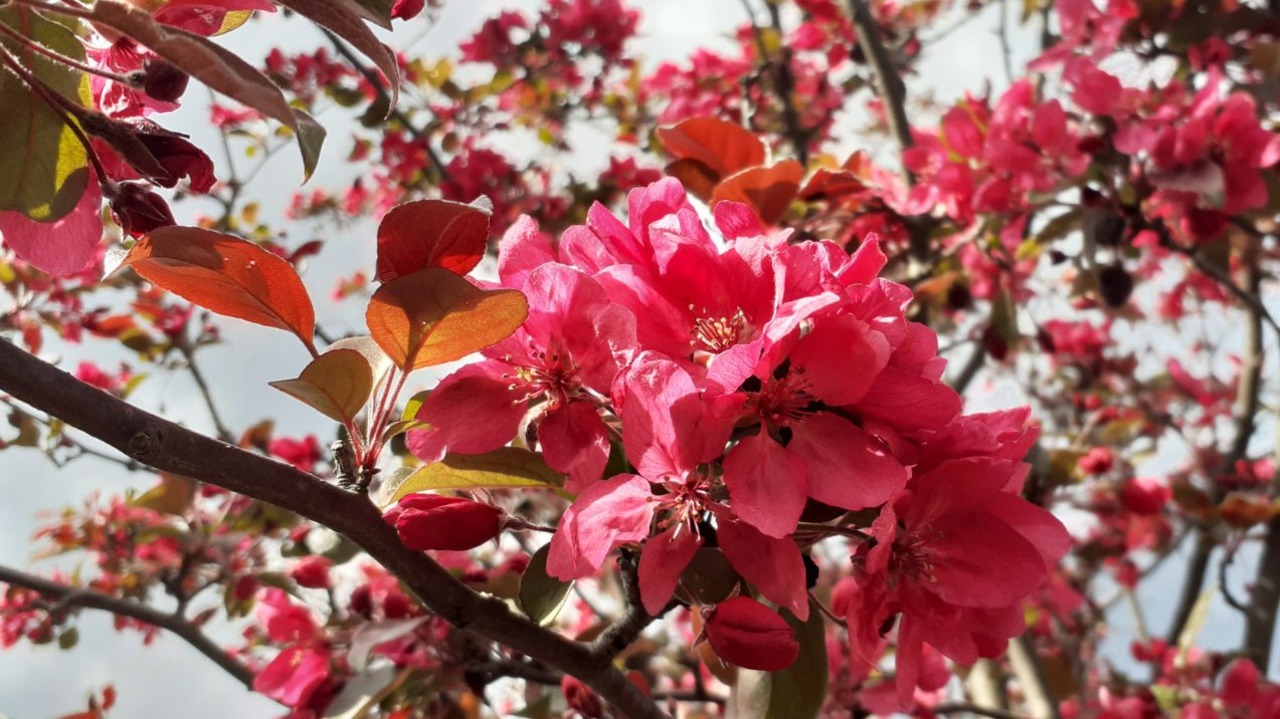
Image Credit: Shutterstock.
“Crabapple” is the common name of this tree, but it is actually the same species as other apples.
The Prairie Fire Crabapple is the star of the early spring landscape with its spectacular display of bright red to dark pink flowers covering every branch. But this variety of crabapple also stands out in early summer, late summer, and fall with its constantly changing leaf color.
Its glossy leaves are maroon or purplish-red from spring into early summer. From mid- through late summer, the tree bears dark green leaves with purplish-red veins. Then they turn a beautiful bronze in the fall.
Prairie Fire Crabapples are adapted to USDA Hardiness Zones 3 through 8. They don’t thrive in tropical climates, since they need colder temps to bloom in the spring.
A mature Prairie Fire Crabapple will reach approximately 20 feet in height and have a spread of about 15 feet. The Prairie Fire Crabapple grows at a moderate rate, adding 13 to 24 inches in height every year. You can use it as a shade tree about 10 years after planting. Prairie Fire Crabapples also need full sun, and at least six hours of unfiltered sunlight every day, so they should be planted in an open spot within your yard. They grow in almost any type of soil, acid or alkaline, sandy or clay, as long as it is well-drained.
2. Crape Myrtle (Laegerstomia indica)
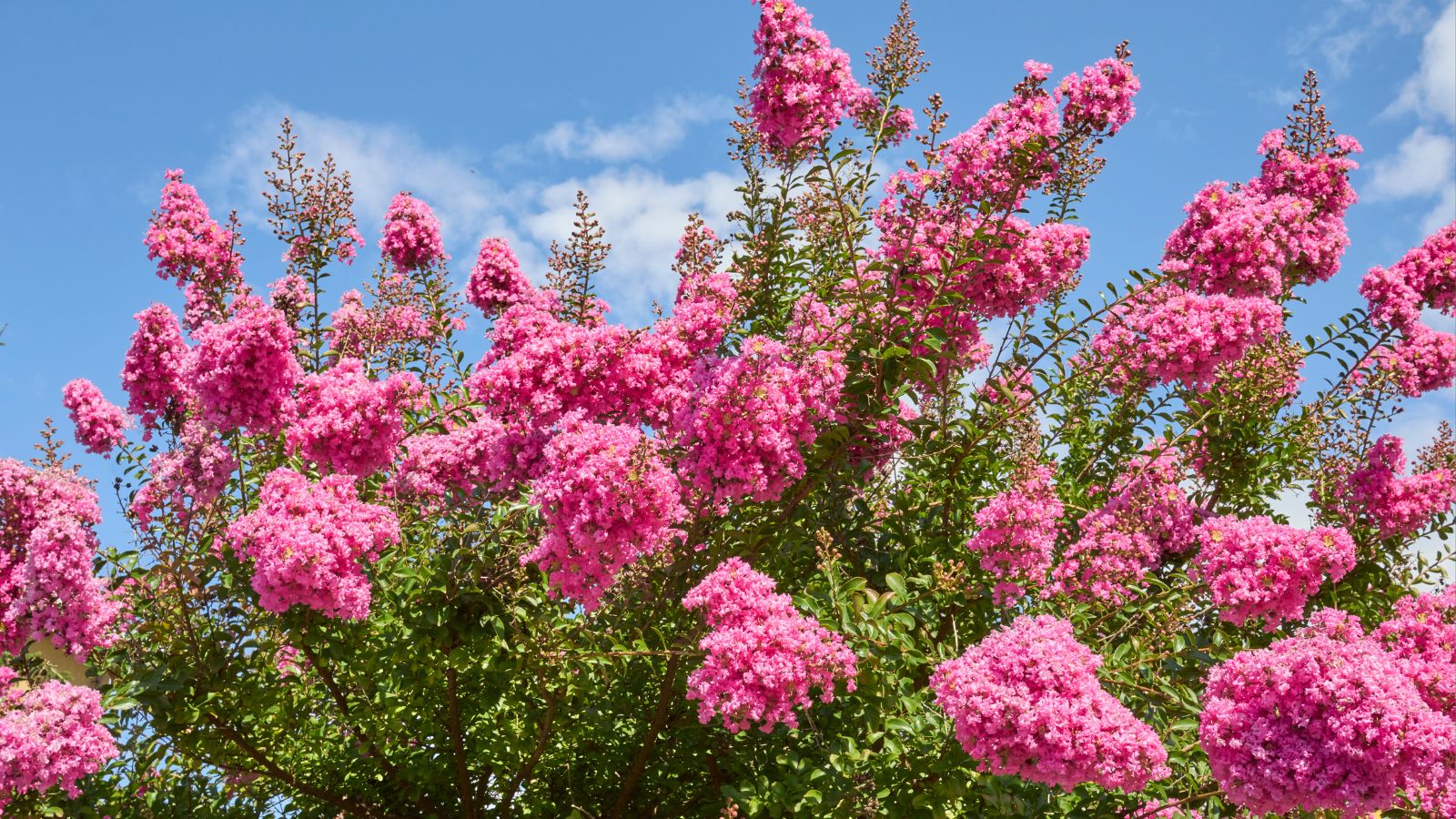
Image Credit: Deposit Photos
Crape myrtle trees come in a variety of colors, as some bloom with red, white, and purple flowers, depending on the tree. They can actually be trained to become a large, multistemmed bush or a small tree with just a few trunks.
The foliage of crape myrtle trees is every bit as attractive as the flowers. In late summer and early fall, crape myrtle leaves turn bright red, yellow, or orange.
As young trees, crape myrtles need lots of moisture. Once they are established, these trees are extremely drought- and heat-resistant. Pinching back new growth in the summer increases the production of flower buds.
Crape myrtles are adapted to USDA Hardiness Zones 6 through 9. They grow quickly, increasing their height at a rate of about 24 inches every year, eventually reaching a height of 15 to 25 feet and a spread of 6 to 15 feet. Crape myrtles grow well in sandy soils, loamy soils, and even clay soils, but they need full sun, and at least six hours of unfiltered sunlight every day.
3. Japanese Flowering Quince (Chaenomeles japonica)
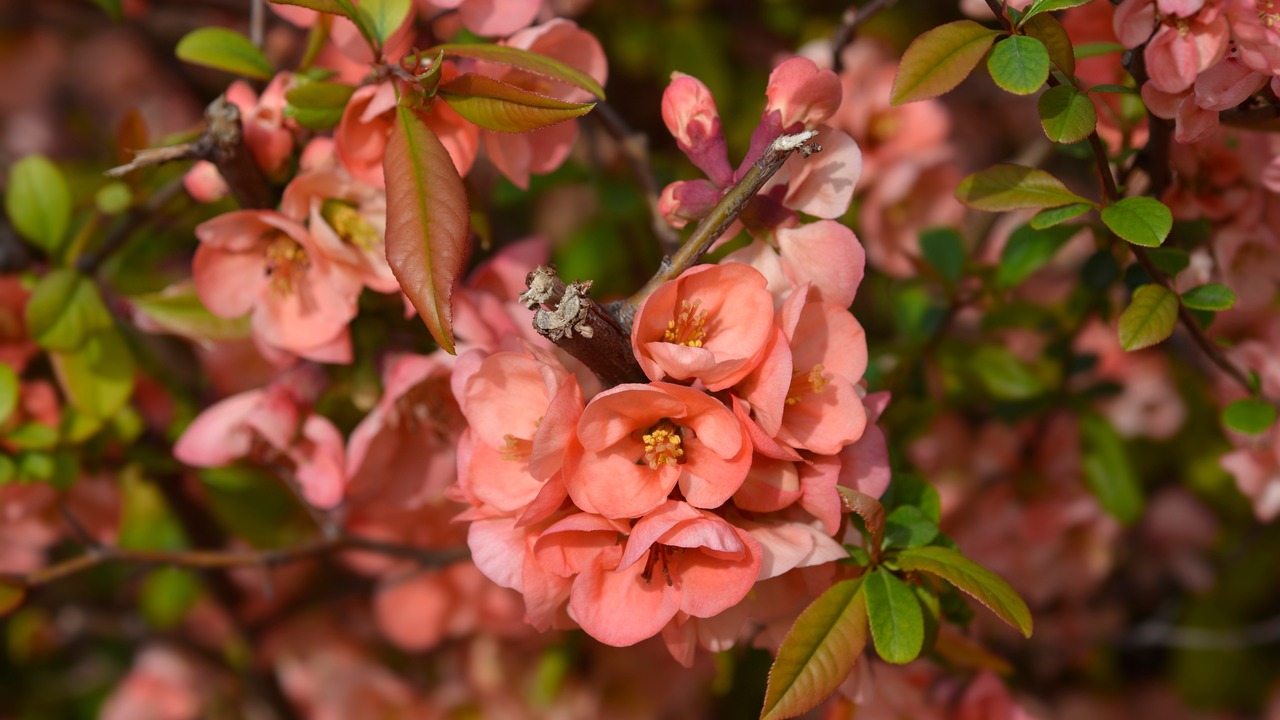
Image Credit: Shutterstock.
The Japanese Flowering Quince is a small, thorny, deciduous tree, really more of a shrub, that makes a brief but spectacular display of flowers every spring. Its red, pink, white, or orange flowers emerge on bare branches in late winter before its leaf buds open. Some varieties of Japanese Flowering Quince put on another, less memorable floral display in the early fall.
This plant is different from the kind of quince tree grown for fruit, but its hard, tiny fruit are edible. You may want to bring them into the house for their delightful aroma when they ripen to a rich, golden color. Japanese Flowering Quinces can be grown as dense, nearly impenetrable hedges, making them great cover for birds and small animals.
A Japanese Flowering Quince can be grown in a space as small as 3 feet by 3 feet, although it will need pruning in spaces that are not at least 6 feet wide. It will grow 2 to 3 feet high.
Japanese Flowering Quinces are adapted to USDA Hardiness Zones 5 through 9. They can grow in clay, sand, compost, or even shallow, rocky soil, and they tolerate occasional drought. They tend to get leaf spot in climates with rainy, humid summers. They work well on slopes and as container plants for your patio.
4. Pomegranate Tree (Punica granatum)
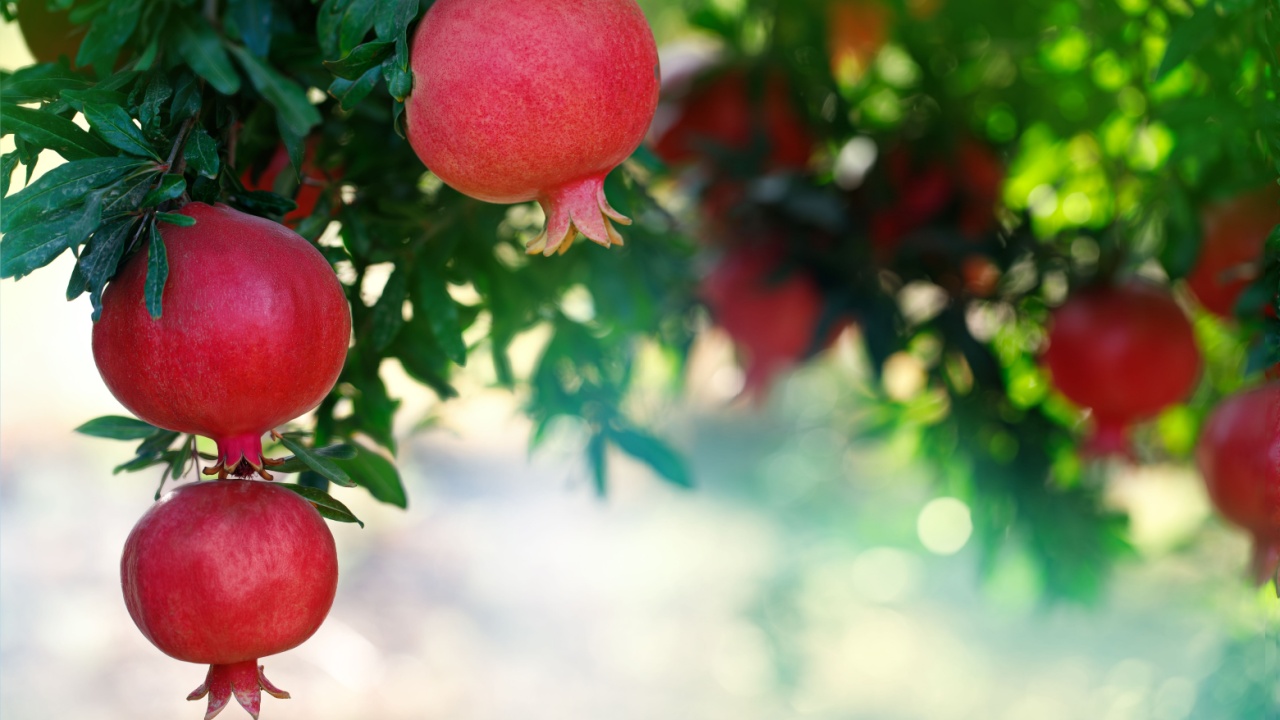
Image Credit: Shutterstock.
The red flowers of the pomegranate tree may remind you of tissue paper flowers you made as a child in your elementary school class for Mother’s Day. And those beautiful red flowers yield the heart-healthy pomegranate fruit.
Many garden experts refer to the pomegranate as a “wannabe tree.” It eventually grows 10 to 12 feet tall and about as wide. It can withstand temperatures as low as 10 degrees Fahrenheit, but in colder climates, it requires winter protection to survive. It works in partial shade to full sun. It tolerates both clay and sandy soils.
The advantage of the pomegranate over other red flowering trees is that it bears flowers from early spring through fall. This makes it highly attractive to hummingbirds and to other wildlife that feast on the fruit with its bright red seeds. The pomegranate tree displays yellow-green leaves in fall.
You can grow the pomegranate tree as a container plant if you live in a location that has cold winters. They make great hedges if you live in USDA Hardiness Zones 9 or 10.
Pomegranates are okay for outdoor growth in USDA Hardiness Zones 8 through 10 and can be grown in containers anywhere that summer nights stay above 50 degrees F.
Choose your cultivar carefully. Pomegranates can also have orange, yellow, or white trumpet-shaped flowers. If you want red flowers with hints of orange, choose “Flore Pleno” or “Wonderful.”
5. Red Dogwood Tree (Cornus florida)
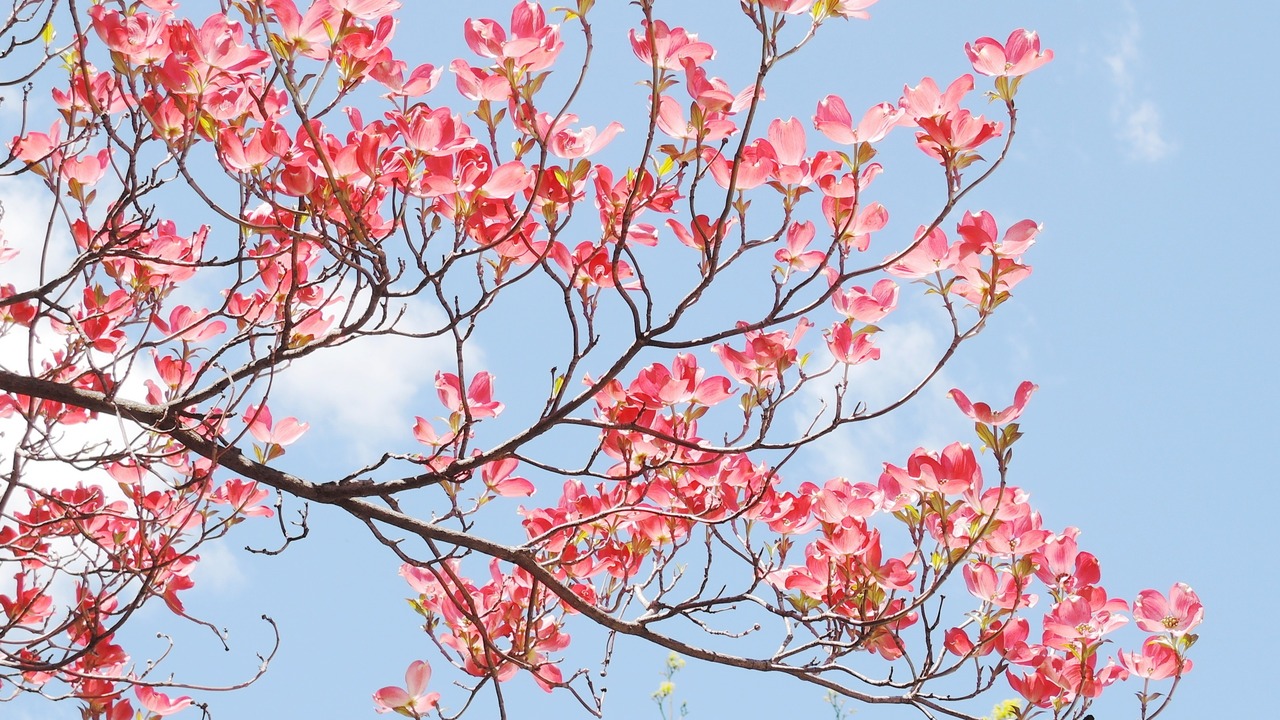
Image Credit: Shutterstock.
Red Flowering Dogwoods are among the favorite blooming trees of the spring throughout the moister locations of the United States east of the Rocky Mountains, north to southern Canada, and south to northeastern Mexico. These trees burst into beautiful floral displays as the taller trees above them are just beginning to leaf out.
Red Flowering Dogwood also has beautiful fall foliage. Leaves may turn bright red or almost purple, revealing the buds that will become next spring’s flowers.
The flower buds of the Red Dogwood Tree form in the late fall and persist through the winter. They look a lot like small onions, and they are covered with hairy scales. Flower buds are usually at the tips of branches, so damage to any part of the branch during the winter prevents spring flowering.
Butterflies and bumblebees visit the Red Dogwood’s flowers, and its red fruits are a favorite food of songbirds that stay through the winter.
Although Red Dogwood is typically an understory tree in natural settings, it grows best in locations that receive full sun for at least four hours per day. Red Dogwoods are fussy about their soil. They need soil with lots of organic matter and a pH of 5 to 6.5. They do not grow in alkaline, hardpan or rocky soils. Red Dogwood Trees are not resilient to air pollution and are highly susceptible to damage from deer, especially when young.
Dogwood trees of all varieties are prone to canker disease, leaf spot, powdery mildew, and bacterial leaf scorch.
Plant Red Dogwood Trees in children’s gardens, pollinator gardens, or next to patios. They are adapted to USDA Hardiness Zones 5 through 9. To ensure you obtain a cultivar with red flowers, select “Cherokee Chief” (note that it differs from “Cherokee Daybreak” and “Cherokee Princess,” which have white flowers), or “Sweetwater Red.”
6. Red Flowering Gum Tree (Corymbia ficifolia)
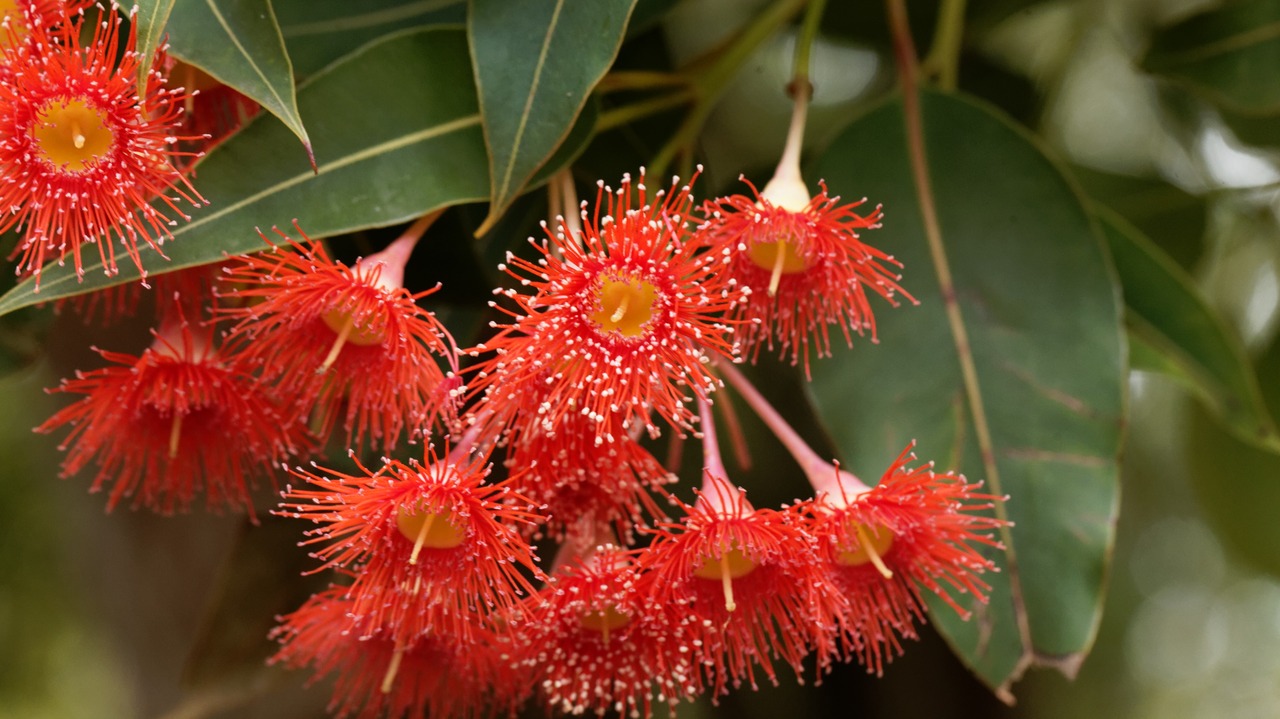
Image Credit: Shutterstock.
Red flowering gums are fast-growing evergreen trees that put on a spectacular display of red flowers in the summer, not in the spring. Their flowers are so abundant that they hide the foliage. Nectar-loving bees, butterflies, birds, and bats come to the tree at all hours of the day and night. The red flowers mature into large, urn-shaped fruits that persist on the tree for about a year before they fall to the ground.
As a relative of the eucalyptus, the Red Gum Tree is well-suited to hot, dry summers. It stands up to summer drought and urban air pollution. It can grow on almost any well-drained soil, and it is salt-tolerant, making it a good plant for coastal landscapes.
Red Gum Trees should be planted in spacious gardens. They grow up to 40 feet tall and have up to a 60-foot spread. They are damaged by frost and killed by temperatures below 10°F, so they should only be planted in USDA Hardiness Zones 8 through 10.
7. Red Silk Cotton Tree (Bombax ceiba)
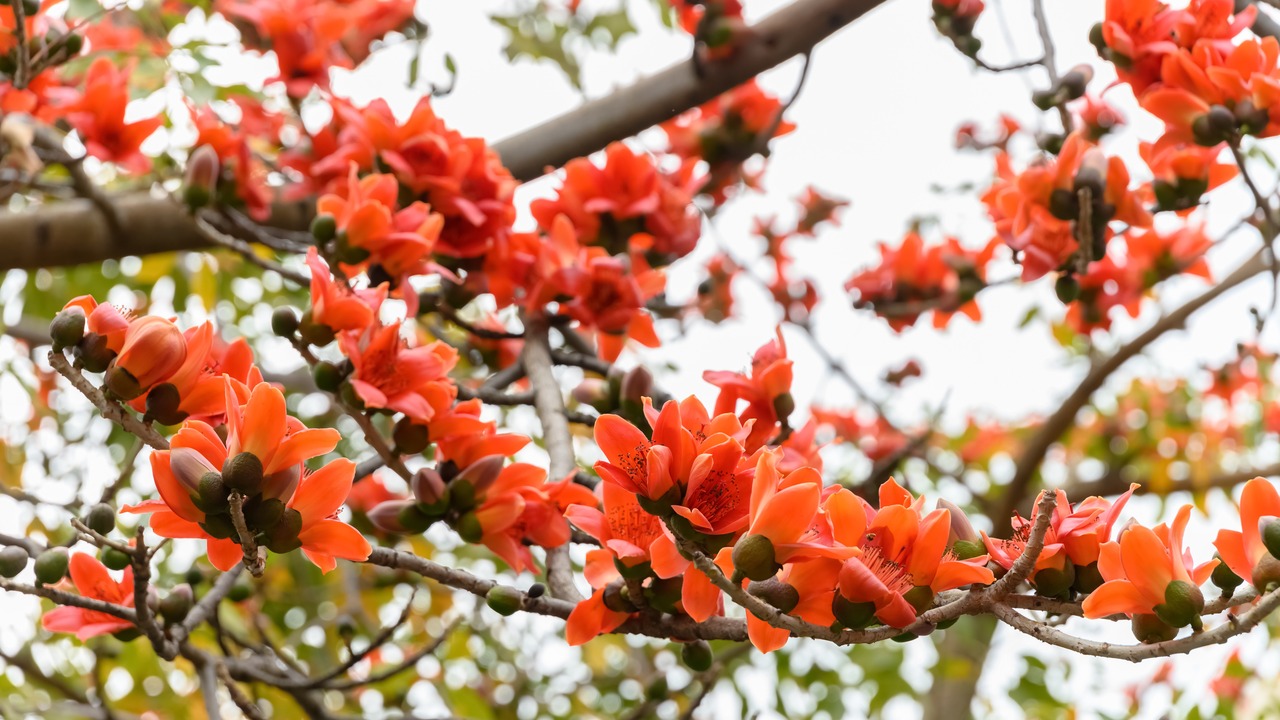
Image Credit: Shutterstock.
Red Silk Cotton Trees become plants nobody can ignore wherever they are planted. They are covered with red flowers for several weeks every spring. The flowers only last a day or two, but each red blossom is quickly replaced by another. The flowers exude sticky nectar that birds love. The ground will be littered with red flowers for weeks.
Most Red Silk Cotton Trees eventually grow at least 60 feet tall and 70 feet across, with some Red Silk Cotton Trees reaching a height of 180 feet in tropical climates. There are two obstacles to growing Red Silk Cotton Trees in North America. One is that they are frost-sensitive. They will only grow in USDA Hardiness Zone 11. The other is that they need full sun. But they thrive on almost any soil type.
8. Royal Poinciana (Delonix regia)
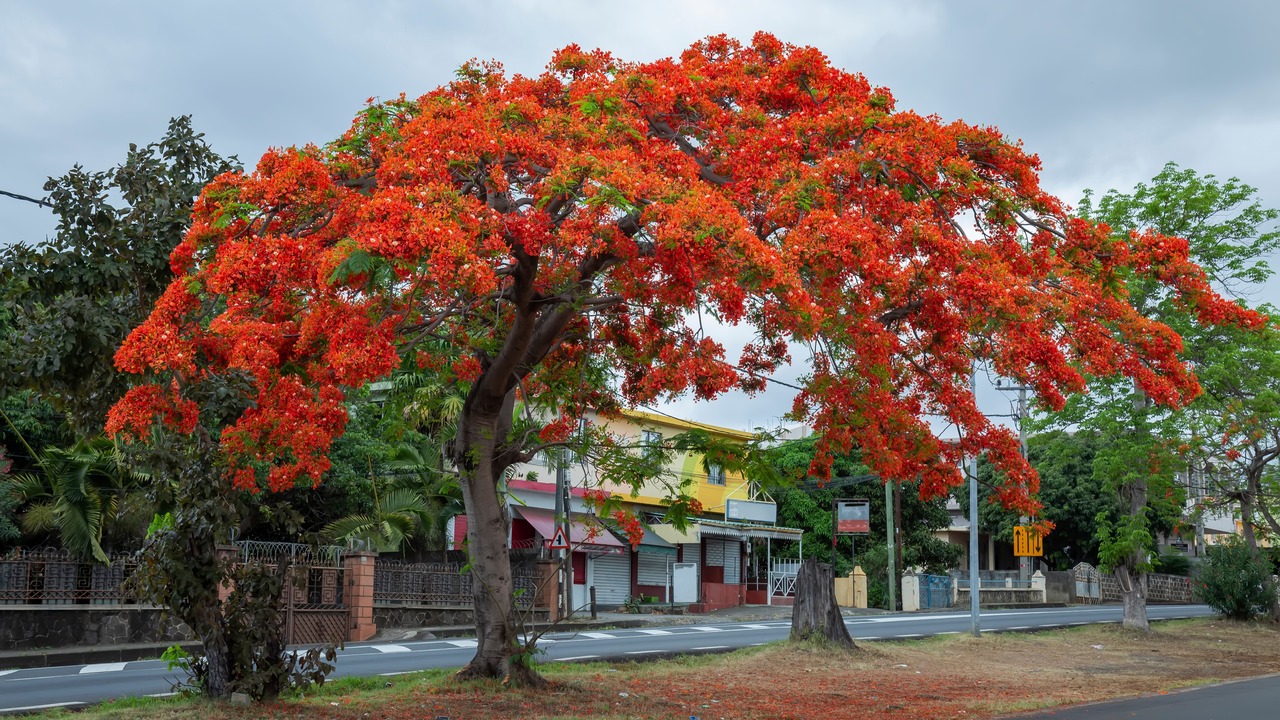
Image Credit: Shutterstock.
Royal Poinciana is a red flowering tree in the Bean Family imported from Madagascar. It is covered with brilliant red flowers all summer long, obscuring its delicate, fern-like foliage.
The Royal Poinciana tree requires a tropical or near-tropical climate but stands up to drought and frost. It blooms better when the soil is slightly dry. In the United States, Royal Poincianas will grow for several years at a time in South Texas and may survive for a decade or more in South Florida.
9. Bottlebrush (Callistemon)
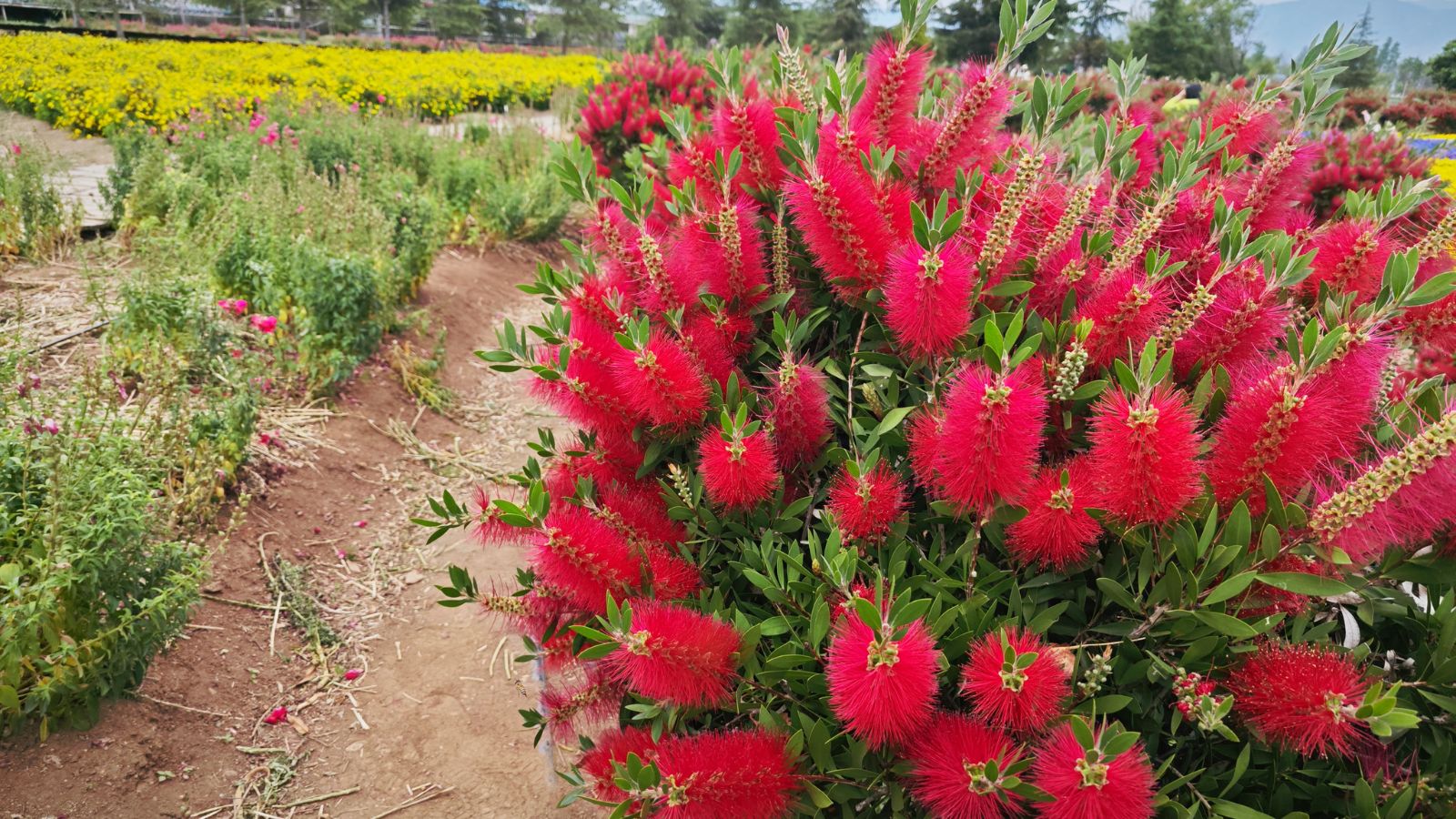
Image Credit: Deposit Photos.
The beautiful flowers of the bottlebrush tree, found in Australia, look just like your common bottle brush. These trees provide food for bees and birds throughout the summer and fall.
10. Red Frangipani (Plumeria rubra)
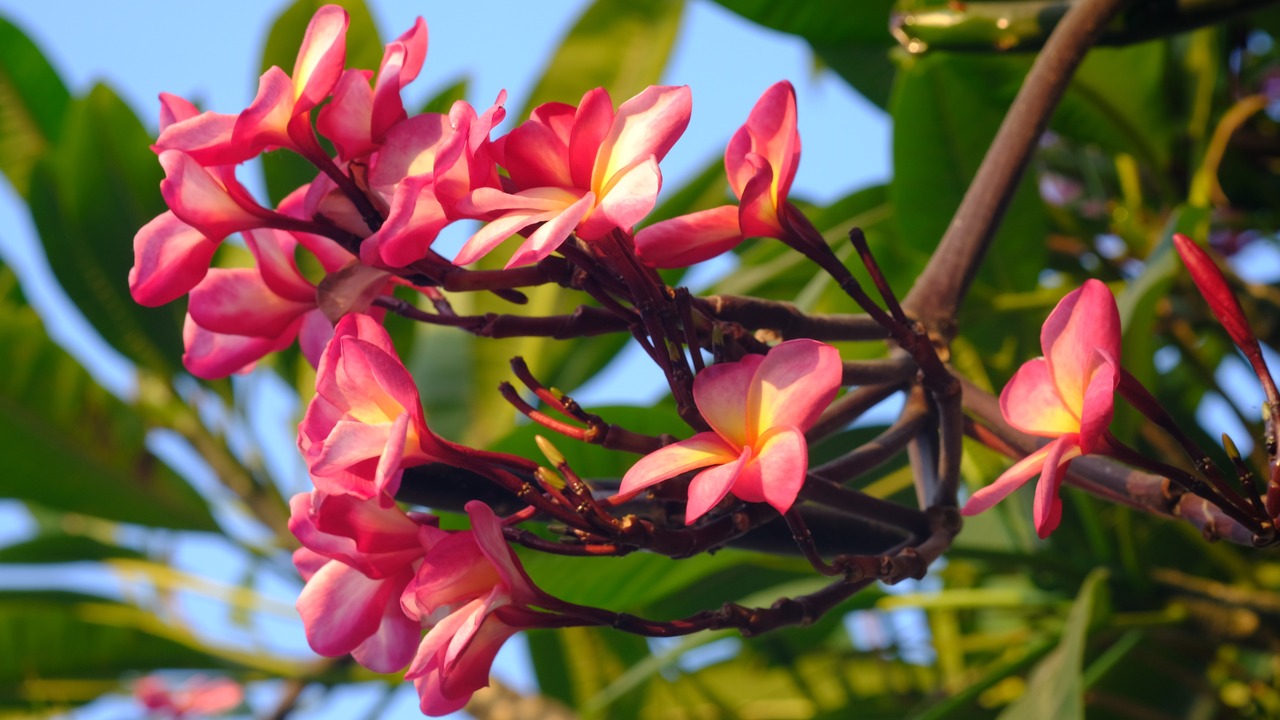
Image Credit: Shutterstock.
Displaying absolutely gorgeous flowers, the red frangipani tree can grow up to a height of 8 – 25 feet. The pretty red flowers smell delicious and will add beauty to your landscape.
We only scratched the surface with these red-flowering trees, but hopefully, you’re not ready to add one or more red-blooming trees to your backyard.

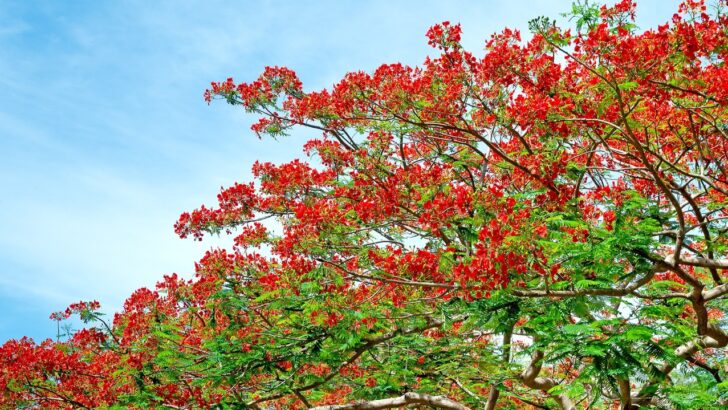

27 Bright And Colorful Flowers With Pictures
Tuesday 4th of July 2023
[…] 10 gorgeous red flowering trees […]
11 Pink Flowering Trees That Add Beauty To Your Landscape
Wednesday 8th of February 2023
[…] red flowering trees […]
10 Best Fast Growing Flowering Trees For Beauty, Shade And Privacy
Wednesday 20th of April 2022
[…] Check out these other red flowering trees. […]